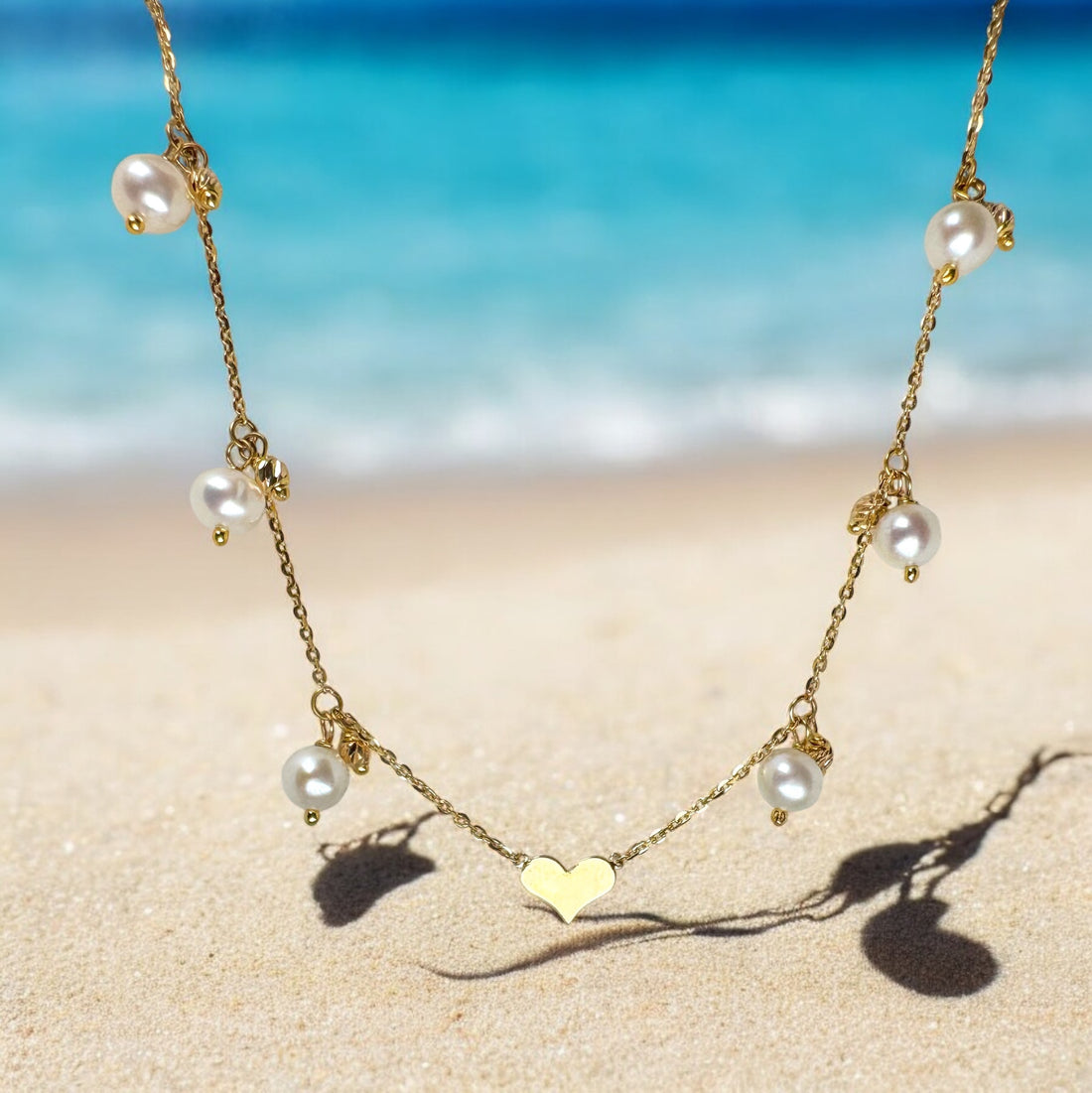
How to Protect Your Pearls: Essential Care Tips
Share
Pearls are not just gemstones; they are a legacy wrapped in luster and elegance. Whether it's a family heirloom or a new addition to your collection, knowing the proper care for pearls is essential to maintaining their beauty and value.
Understanding Your Pearls Pearls are unique in the gem world, being the only ones born from the living sea or river. Here’s what you need to know:
Types of Pearls:
- Freshwater Pearls: Often more accessible and great for daily wear.
- Saltwater Pearls: Including the esteemed Akoya and Tahitian, these are the epitome of classic pearl beauty.
The Science of Pearls:
Pearls are organic gems, making them vulnerable to acids, humidity, and extreme temperatures. Their care starts with understanding their delicate nature.
Daily Care Tips Daily care tips for pearls ensure they continue to glow and do not deteriorate from daily wear or environmental factors.
Handling Pearls Properly:
Handle pearls gently and always pick them up by the clasp to avoid stressing the nacre.
Cosmetics and Pearls:
Follow the advice, "Makeup before pearls," to prevent cosmetic chemicals from tarnishing the nacre.
Wearing Pearls Regularly:
The benefits of wearing pearls regularly include enhancing their luster with your skin’s natural oils.
Cleaning and Maintenance How to clean pearls at home safely and effectively can prevent many common issues associated with pearl wear.
Routine Cleaning:
Wipe your pearls with a soft cloth after each wear to remove body oils and contaminants.
Deep Cleaning:
Use a mild soap solution for deeper cleaning, ensuring you never submerge your pearl strands fully.
Storing Pearls:
Best ways to store pearls involve keeping them away from harder gemstones and in a soft-lined jewelry box.
Professional Care Professional pearl cleaning services can extend the life and beauty of your pearls, especially when routine care isn't enough.
Regular Inspections:
Annual checks by a professional ensure your settings are secure and your pearls are not unduly worn.
Re-stringing Pearls:
Pearl necklace maintenance should include periodic re-stringing based on wear frequency.
Avoiding Common Hazards Avoiding damage to pearls means keeping them away from harsh chemicals and physical abrasives.
When it comes to pearls, being mindful of their environment is crucial for maintaining their beauty and integrity. Here are some detailed tips to help protect your pearls from common hazards:
Chemical Exposure:
Chlorine is a pearl's nemesis. Found in pools and hot tubs, it can severely damage the delicate surface of pearls, leading to a loss of luster and even structural integrity. Always remove your pearl jewelry before swimming or engaging in activities where they might come into contact with chlorine.
High Acidity:
Pearls are particularly sensitive to acids. Regular exposure to acidic foods, skin oils, or even your sweat can wear down their luster over time. It’s best to leave your pearls in a safe place during meals, workouts, or any activity that could expose them to acidic substances.
Dry Environments:
Just like our skin, pearls need moisture to stay hydrated. Too much dry air can make them brittle and more likely to crack. If you live in a particularly dry climate, consider storing your pearls in a controlled environment with stable humidity levels to preserve their natural moisture.
By following these precautions and understanding what can damage pearls, you ensure that your cherished pearl jewelry remains radiant and lustrous for years to come.
Conclusion:
Caring for pearls is caring for a piece of history. Utilize this pearl jewelry care guide to ensure your pearls remain a shining beacon of your jewelry collection.
